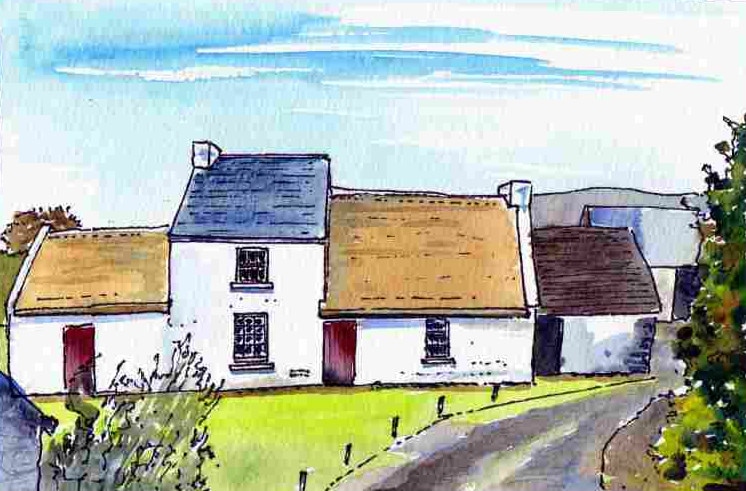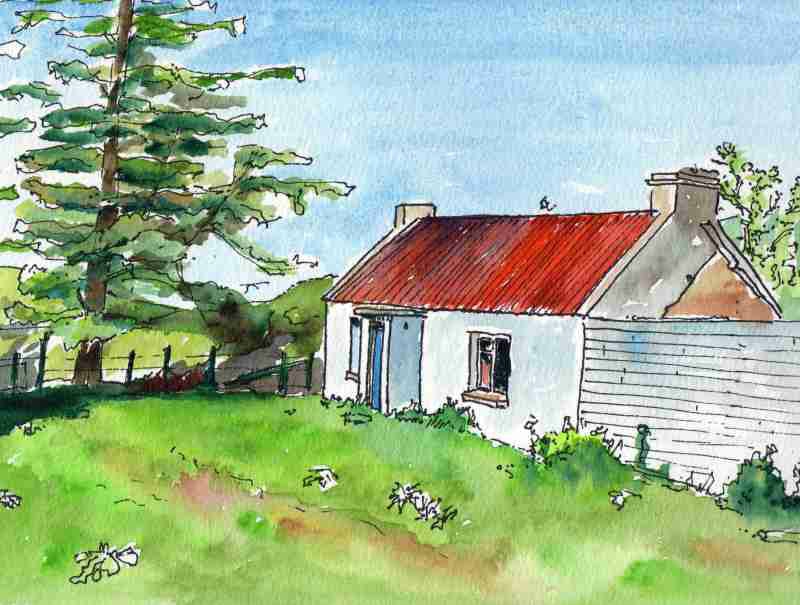Vernacular Houses |
|
|
The Wilson House in the outskirts of Strabane, is a good example of a typical historic rural house of this area. Any differences in custom between the houses of locals and settlers had been amalgamated by the Eighteenth Century in a use of common materials and a reaction to a common climate. Known as the ‘direct entry’ type, its entrance opens onto a living space with a fire on the furthest cross wall. A thatch roof covers lime washed stone walls. The raised portion with slate roof dates from the nineteenth century. This building has been preserved because it is reputedly the ancestral home of President Woodrow Wilson. His ancestors left this area in 1807 and emigrated to America.
Once very common, in recent times most of these have been replaced by modern farm dwellings. A number survive, however, in the rural area, particularly around the Glenelly Valley. Typically, these buildings had their thatch replaced with tin in the mid Twentieth Century but are now vacant. Modern space requirements appear to be mitigating against these picturesque buildings, even though it is very possible to extend and reuse them. |
|
Wilson House, Strabane
Vernacular House, Glenelly Valley.
Vernacular House, near Plumbridge.
|




